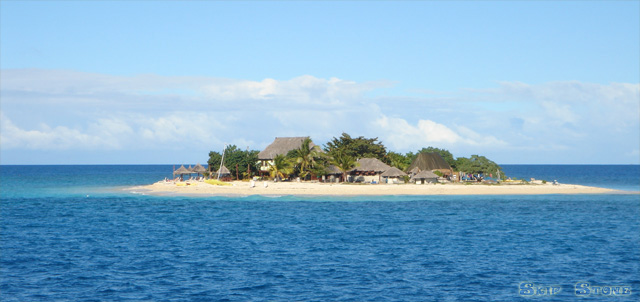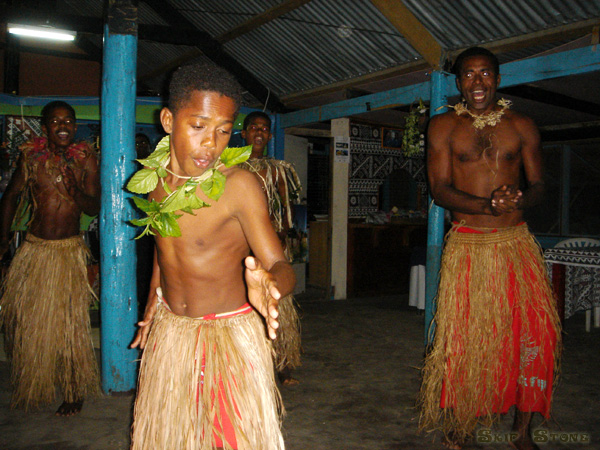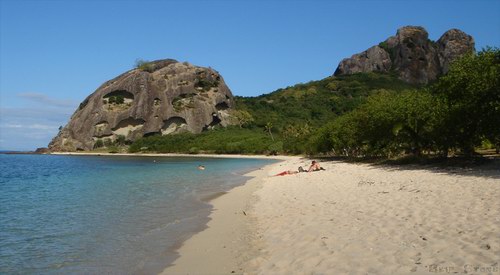
South Sea Island Fiji

Bula Dance – The Fijian Welcome


South Sea Island Fiji

Bula Dance – The Fijian Welcome
Enjoy this Fiji travel video with music.
Fijians love to dance!
Enjoy these beautiful images of the Islands of Fiji
Visit Fiji with this map. Double-click to zoom in, click and drag to move it around. Change from satellite view to road map to combination maps.

Fiji is an island group in the South Pacific located northeast of New Zealand, near the International Date Line. A long-time British Colony, Fiji has enjoyed independence since 1970. Captain Bligh once found refuge here after the “Mutiny on the Bounty.”
With the most landmass in all of Polynesia, Fiji boasts 333 islands, but only about 100 are actually inhabited. The islands are mainly volcanic, with some smaller islands being made up from coral atolls and reefs. Viti Levu is the biggest island, with an interior highland plateau mostly over 1000 feet in elevation, and villages and towns scattered around its coastline.
Suva is the capitol of Fiji, and the largest city with a population of several hundred thousand. Vanua Levu is the second-largest island, and is mainly residential, filled with native villagers living in a tribal society.
The islands were once covered with lush virgin rainforest, but this has been heavily logged over the years. Almost all the native sandalwood trees are long gone, and mahogany is the next victim of the lumberjacks. You’ll see the logging trucks as you drive around Viti Levu. In the drier areas of the islands, people have been growing sugar cane for decades, and the destruction of the native flora and fauna continues. There are very few pockets of original rainforest left, but there is an active campaign to reforest the island with pine trees.
It is wonderful to see the many thousands of beautiful fern trees of Fiji thriving. They seem to be growing everywhere, and not just being used as the timbers in the traditional Bure huts the Fijians build.
Bats are the only native mammals to the islands, and the mongeese you see were imported from India in a vain attempt to control the snake population on the islands. Otherwise, Fiji is known for the thousands of bird varieties that are to be found here. The best islands for birdwatching are Taveuni, Kadavu and Vanua Levu. Species to look for are Fiji petrels, peregrine falcons, silktail and long-legged warblers, and of course the many parrots of the islands.
Fiji is a wonderful place to go on holiday, with a variety of hotels and resorts willing to put you up, feed you, and entertain you. Bula is the word for welcome, and it drips off everyone’s smile quite readily! Fiji is a welcoming place with a beautiful climate and friendly people.
To get to Fiji you will fly into Nadi International Airport on the west side of Viti Levu, the main island. There is another international airport near Suva, the capital, but it serves fewer flyers, mainly inter-island hopping flights.
An ancient land filled with waterfalls, remote tropical islets, forested big islands, rare tropical plants and birds, Fiji is an exotically wonderful vacation destination. Originally a land of cannibals, Fiji is now known as a former British colony and ex-pat hangout, with an atmosphere of slow colonial decay pervading the islands and its infrastructure. Tempered by the exhilarating rush of tourist dollars, this malaise gives way to hustle and bustle in Suva and Nadi, the big towns of Fiji. Otherwise, you are on remote tropical islands in the midst of the South Pacific. But how did we get here?
According to Dr Roger Green, Professor of Anthropology at Auckland University, in New Zealand, the first settlers arrived some 2,000 years before Christ was born. Comprised of two distinct peoples, one Melanesian, the other Polynesian, these early settlers spent millennia battling each other for control of the islands.